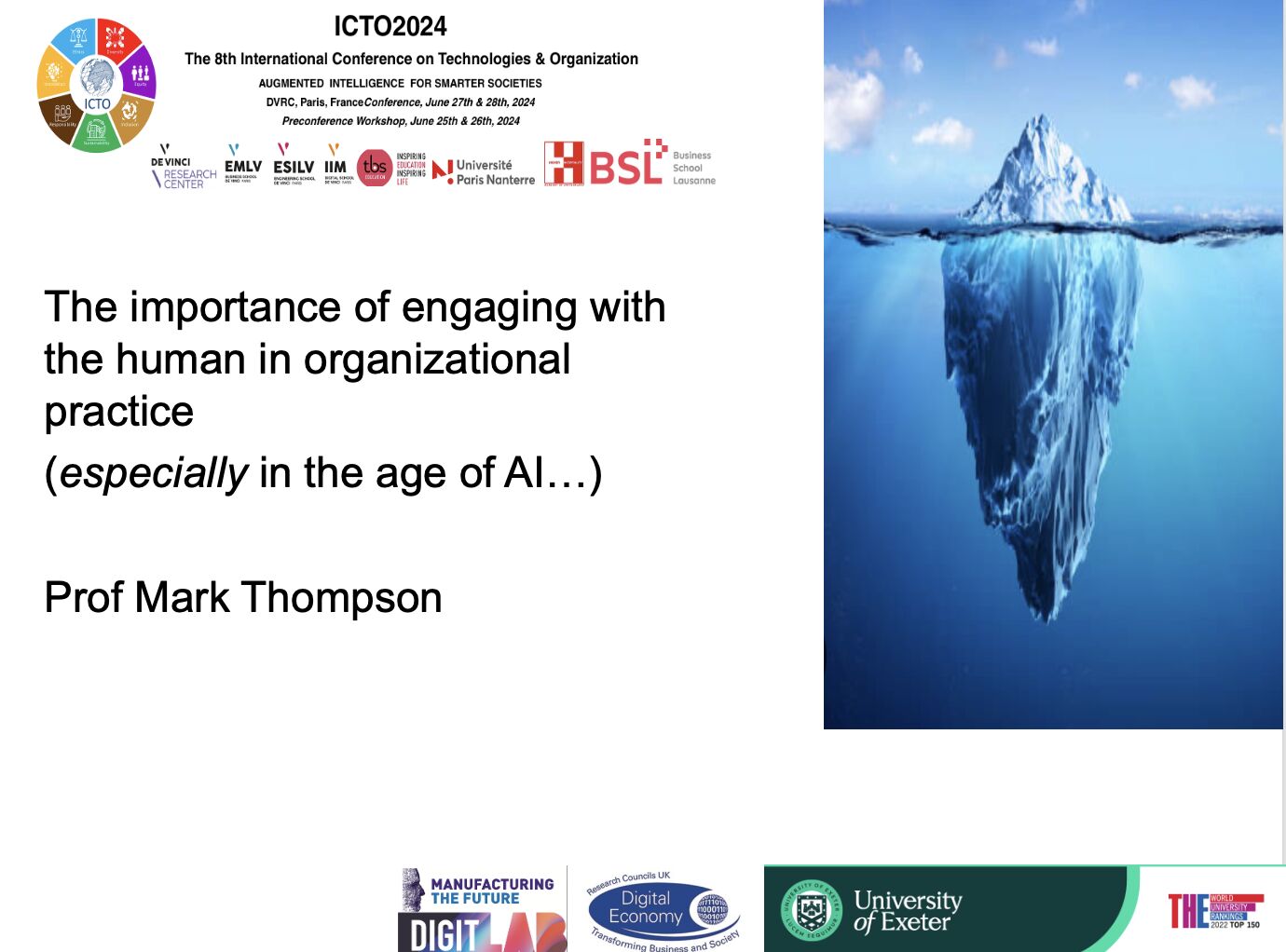By Alan Brown
In the past few days, the UK Government has issued its latest strategy for transforming into a digital future focused on accelerating the use of digital technology and data-driven decision-making in the public sector. It is a well-meaning and welcome document that sets out a common cross-government approach for 2025. The centrepiece of the strategy is 6 goals (or missions) that the government must address to achieve its purpose:
- Digitally transform public services
- Ensure a single digital access point to Government
- Bringing higher quality data to power decision making
- A focus on secure, efficient, and sustainable technology
- Investment in digital skills for senior managers
- A financial management and governance approach in support of digital transformation.
The context and timing of this latest strategy document are important. In all aspects of society, we face huge challenges today to address the deep wounds inflicted by the pandemic. The UK public sector must address particular concerns, both as a result of responding to the current emergencies and due to the digital failures of the past. Significantly, the strategy document openly acknowledges the track record of past failures, stating that “previous [digital] strategies have lacked specificity, cross-government endorsement, clear lines of accountability and business ownership. Subsequently, former flagship programmes have slowly shut down and failed to deliver results.” It is a courageous admission and highlights the difficult journey that lies ahead.
Yet, in my view the strategy makes an important omission by failing to recognize the most fundamental challenge facing digital transformation in the UK public sector: A lack of digital leadership. Not in the sense of appointing special teams and committees to administer digital change. But a much deeper and pervasive sense of commitment and urgency across all those in senior leadership roles of the need to redefine the public sector for a digital world. This demands a more substantial reorganization to support a new way of operating. Without this, any large established organization will struggle to build momentum, drive substantial change, and face up to the difficult shifts required across the people, process, products, and services they deliver.
The Digital Imperative
The first two decades of the 21st Century have seen a particular focus on the impact of digital technology in business and society. From initial investigations into the technology’s capabilities for speeding up back office processes and increasing online channels to customers, all organizations have taken steps to build deep knowledge to drive the delivery of digital products and services. As noted in extensive writing by authors such as Gary Hamel and Thomas Friedman, the impact in many businesses has been extensive and dramatic.
The extent of the changes can be seen in shifts in many areas of both the public and private sectors. An interesting illustrative example is in the restaurant and food delivery services industry. The past few years has seen a phenomenal rise in personalized menu planning programs (such as HelloFresh, Gousto, and Blue Apron) and online ordering businesses (such as JustEat and Deliveroo). These are founded on digital platform business models that open up marketplaces to a variety of consumer tastes and food suppliers. Their digital-first services and agile business models are clear to all.
Similarly, traditional small and large food supply businesses have also made significant changes. Established organizations such as Domino’s pizzas have focused their strategies on digital technology deployment and invested significantly in sophisticated point-of-sales (PoS) systems, mobile online ordering apps, and efficient digital supply chain management solutions to drive their competitiveness. This digitization has been essential. However, it has also be supported by organization-wide restructuring to effect a transformation in business operations and decision making. Domino’s Pizza chain’s outgoing CEO, Patrick Doyle, went as far as to claim that Domino’s share price rise from $10 per share in 2010 to over $200 per share in 2018 was largely founded on their digital technology leadership. Even pizza companies are claiming to be differentiated through digitization and transformation!
Understanding the Digital Difference
Introducing digital technology is part of a wide-ranging shift for all large organizations. Yet, it is tempting for organizations to talk in broad terms about digital transformation as if it is a technological phenomenon unconnected with previous management approaches. In practice, however, adjusting structures and strategies to deal with prevailing risks and uncertainties has always been a major element of public and private sector life. The differences in a digital world have been experienced at 3 distinct levels:
- A new stream of technologies needed to be understood and adopted as part of any solution. The speed at which these are appearing and evolving is leaving many organizations behind. Consequently, organizations are investing in innovation skills to become more aware of potential technology-driven disruption, and to accelerate their ability to quickly absorb these changes.
- The tools for planning, organizing, managing and delivering large-scale projects are increasingly digital. Hence, the individuals, communities, and companies responsible for project execution are going through their own digital transformation. Business leadership in the digital era is requiring new skills unfamiliar to executives trained in 20th Century management approaches. Many are struggling to adopt the new tools and techniques at sufficient pace, increasing the volatility of key management tasks.
- The expectations of stakeholders on all sides have been massively raised by high-profile digitally-powered organizations raising the bar in products and service delivery far above previous industry norms. Consumers are becoming accustomed to high levels of service offered by companies with significant experience in digital ways of working, including technology companies (e.g., usage-based pricing models from Google, Amazon, and Microsoft), logistics and delivery companies (e.g., real-time tracking and planning capabilities from companies such as FedEx and UPS), retail companies (e.g., agile market sensing from retail groups such as Inditex and Net-a-Porter) and financial services companies (e.g., responsive customer service from digital-only UK banking startups such as Mondo, Starling, and Tide). Inevitably, comparisons with these digital business leaders are made when processes experienced by customers are ineffective, or product performance is substandard.
As a result, several studies such as this and this on digital transformation in business are reporting that organizations undergoing digital transformation must take explicit steps to embed digital technology, process, and skills within their broader strategic planning and management activities. Significantly, they are looking beyond the traditional home for digital programmes within the IT department to insist that all aspects of the organization, particularly senior leadership roles, adjust to meet the challenges and opportunities that this brings.
A practical starting point for many of these organizations has been to focus extensively on customer experience programmes aimed at connecting with customers and broader stakeholders to enhance their interactions through a variety of online channels. More recently, this has been expanded to include an increasing focus on internal employee experience and to develop the organizational culture necessary to accelerate growth, change, and innovation. The success of these efforts is based on a deep review of the disruptive nature of emerging digital technologies, and an investment in cross-functional, collaborative teams sponsored by senior leaders in the organization.
Moving Beyond Digital Technology
However, several studies also highlight that digital strategies focus too much of their efforts on the technologies rather than the underlying architectures and structures that surround them. Consequently, experiences in digital transformation have frequently not been positive, particularly within complex organizations and when associated with significant cultural change. In the public sector, for example, digital technology deployment and the transformation of processes to adopt them have come under a lot of scrutiny in the past few years.
In the UK public sector, three of the largest digital transformation programmes, Universal Credit, London Crossrail, and the high-speed rail network HS2 have all been heavily criticized for cost overruns, delays, and lack of transparency. As with many public sector initiatives, the challenges are multi-dimensional. Yet, the digital technologies at the heart of these programmes do not come out well in these reviews.
Furthermore, it is accepted that executing large transformations of this scale is particularly challenging, especially when being carried out with wide public scrutiny. Regardless of the digital component of such efforts, the issues being addressed are ones of scale, diversity, financial management, politics, and much more. Their execution is notoriously difficult to manage, and widely commented upon. As a result, evidence of poor performance has been seized upon in terms of the broader damage to the UK national reputation for managing large projects with the root of many of the issues seen by the UK National Audit Office (NAO) as “weak management, ineffective control and poor governance”.
To summarize the experiences from these programmes, it is reasonable to conclude that the day-to-day challenges of these efforts is overwhelming without a clear and pervasive understanding of the nature of transformation beyond the “shift and replace” mentality often seen with digital technologies. They are trapped into managing the minutia of massive engineering projects fighting to keep up within a volatile and complex delivery environment. Something is missing.
The Digital Leadership Challenge
Each of these projects have very high digital technology components, as you would expect of any major infrastructure project in the 21st century. However, far from making these projects easier to deliver, the opposite seems to occur. While benefiting in many ways, the digital technology aspects have been specifically highlighted as adding significantly to the risks inherent in those projects by forcing new operating procedures and introducing untried, evolving technologies into complex arenas with unprecedented socio-technical challenges.
These experiences point to a compelling conclusion: Digitization is not the same as digital transformation. Simplifying the architecture and delivery models for government solutions is an essential precursor to a successful digital strategy. A vision is required that simplifies, unifies, and standardizes digital service delivery. Furthermore, it must encourage and support the use of common digital services and platforms across the public sector for use by different departments and units. Experience with platform models for service delivery have already begun to emerge in the public sector. These must be reviewed and evangelized wherever possible. Initiatives to champion their use are critical.
Such examples serve to highlight the importance of leadership to drive successful adoption of digital technologies into mainstream projects. Something that appears to be still in short supply. This is not purely a public sector issue, as highlighted in a 2018 survey of over 4,000 managers and leaders from across the world by MIT’s Sloan Management Review and Cognizant. In that survey only 12% of respondents strongly agreed that their organizations’ leaders had the right mindset for digital transformation, and less than 10% strongly agreed that their leaders had the appropriate skills for success in the digital economy. A situation that must be addressed for projects to improve their rate of success.
In our digital world, using common services and platforms to transform organizations to be more efficient, responsive, and better aligned with stakeholder needs will drive use of digital technologies and practices across many different dimensions. Success demands a leadership approach that ensures everyone in the organization is digitally-aware in the same way they understand financial controls and governance structures, marketplace innovation, fairness and diversity in recruitment, and their role in driving corporate strategy. With the rapid evolution of digital technology, this requires an ongoing process of education, experimentation, and delivery across all leadership roles.
Being Digital
Digital strategies drive organizations toward common goals and help us to measure their progress in achieving them. The latest UK Government digital strategy highlights the importance of transforming public services to meet the needs of our digital future. But it lacks an underlying vision for a digital way of working where common services and platforms drive efficiency and open up markets. To ensure it has impact it must be supported by a digital leadership approach that drives everyone to move toward a digital operating model appropriate for the digital age.
Originally posted on Alan Brown’s Digital Economy Dispatches











